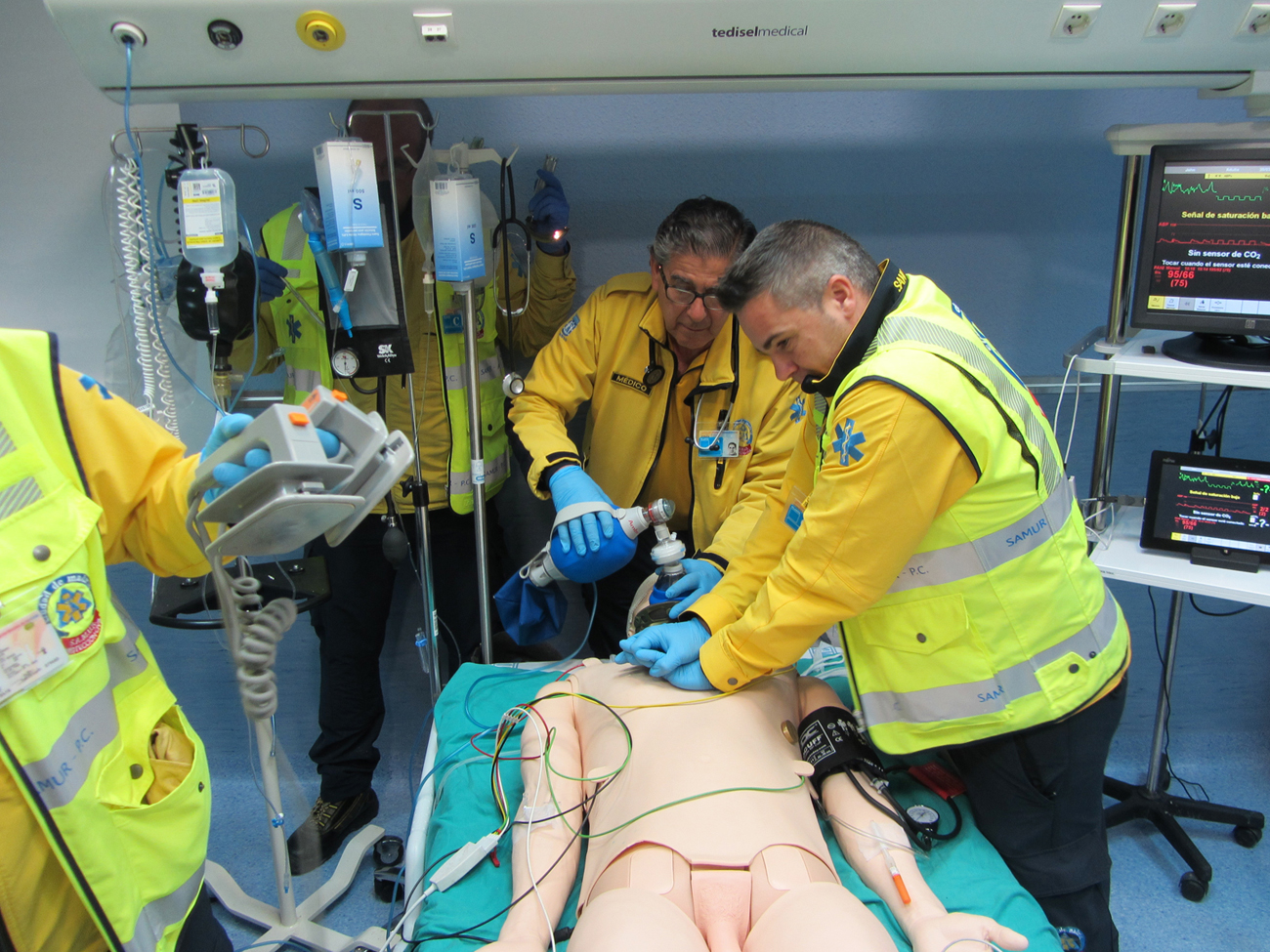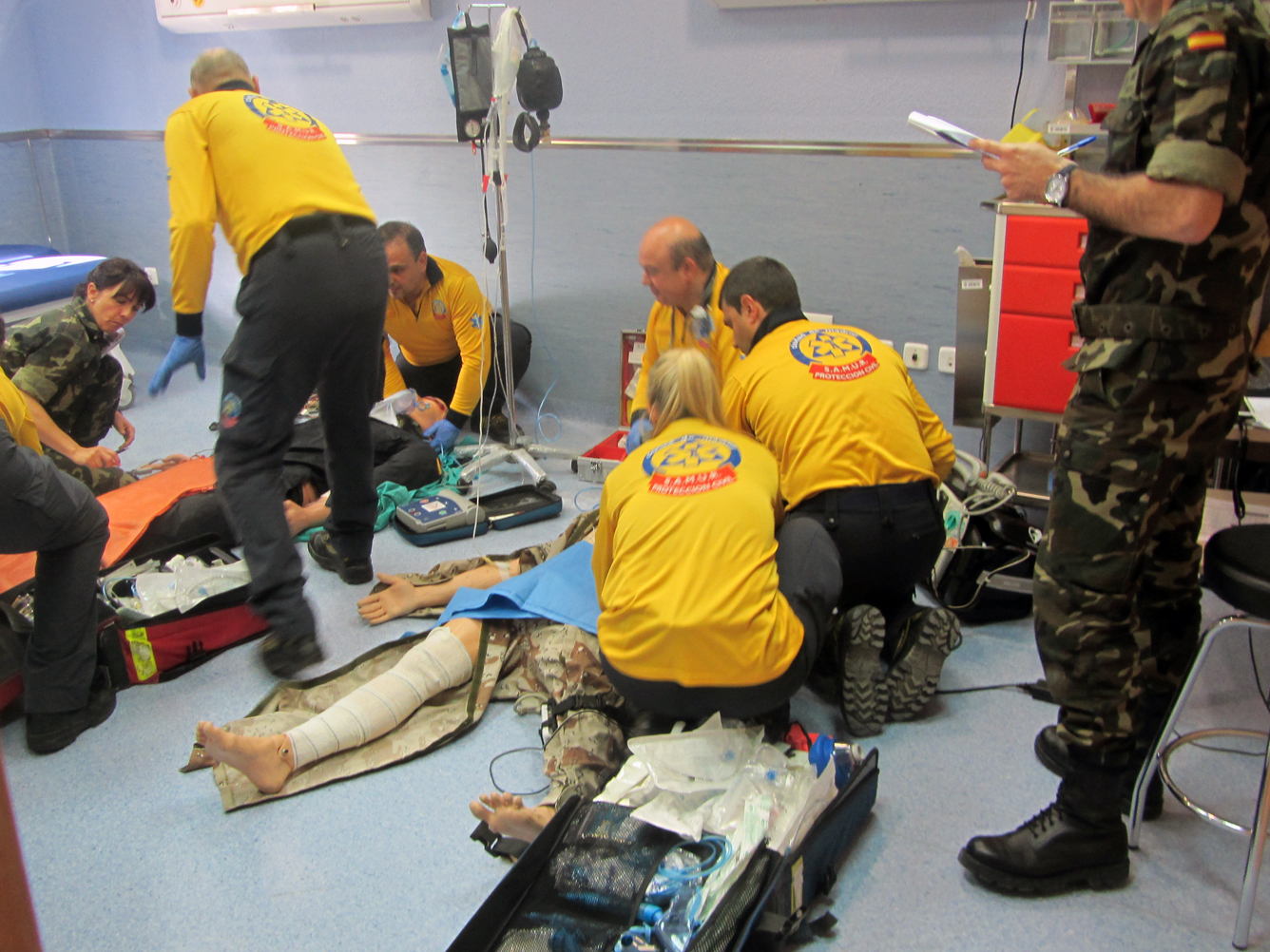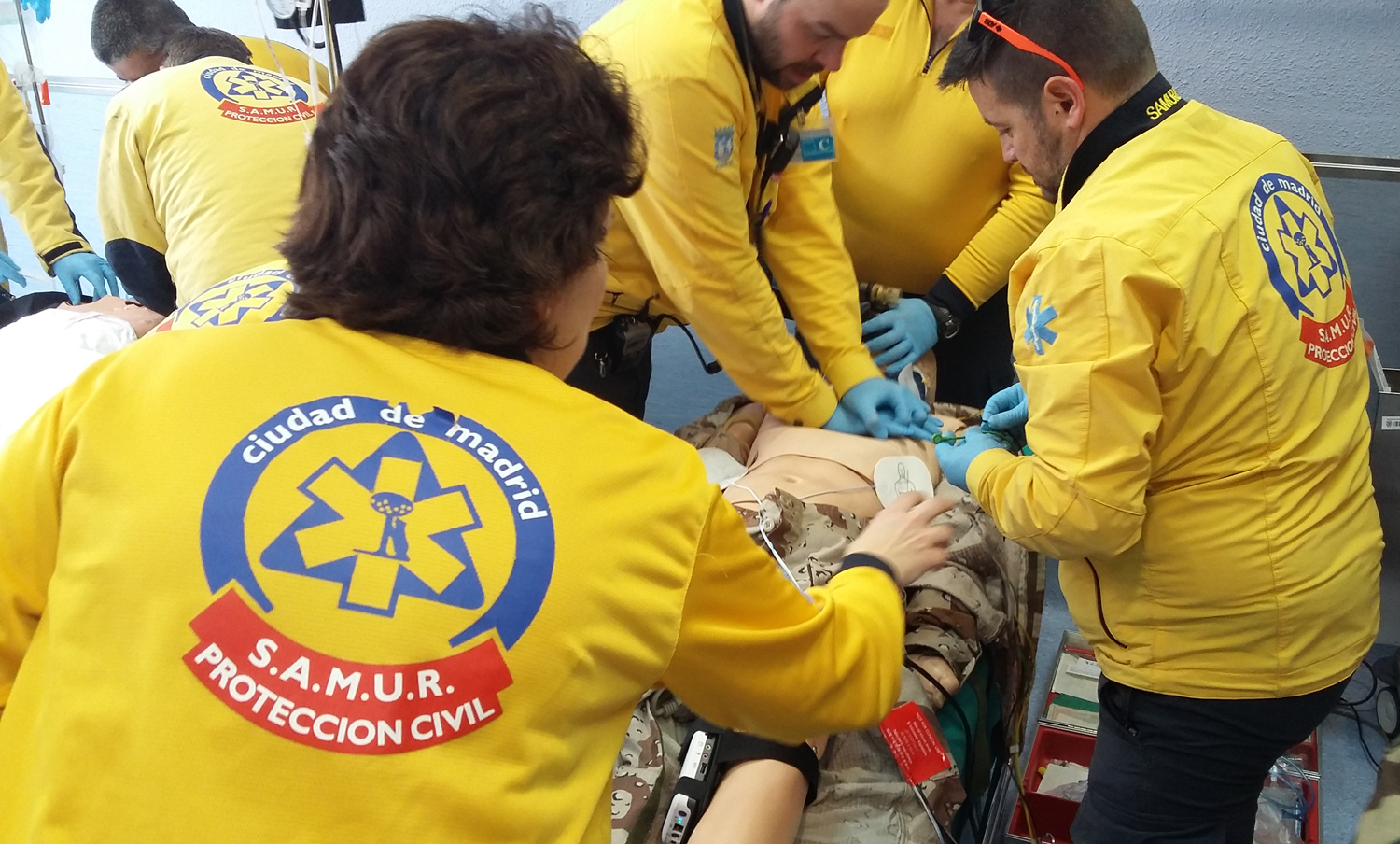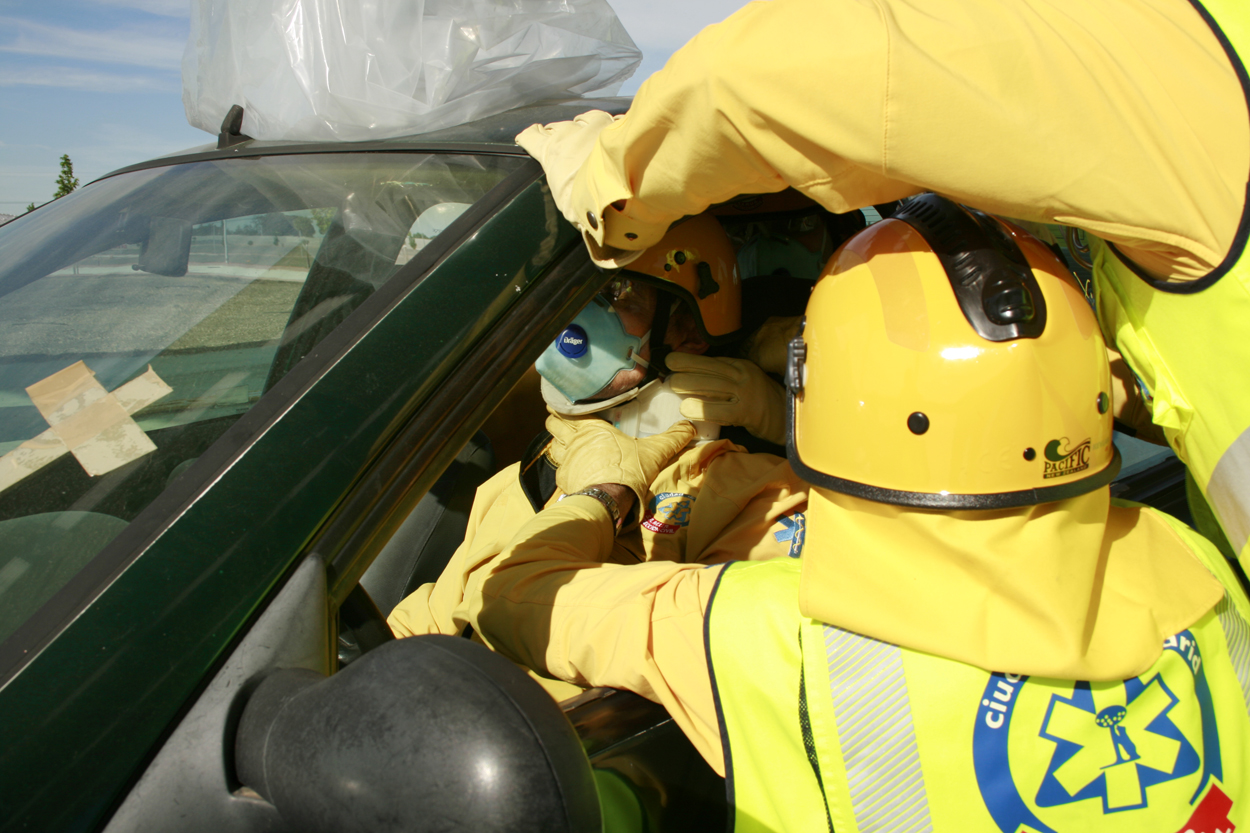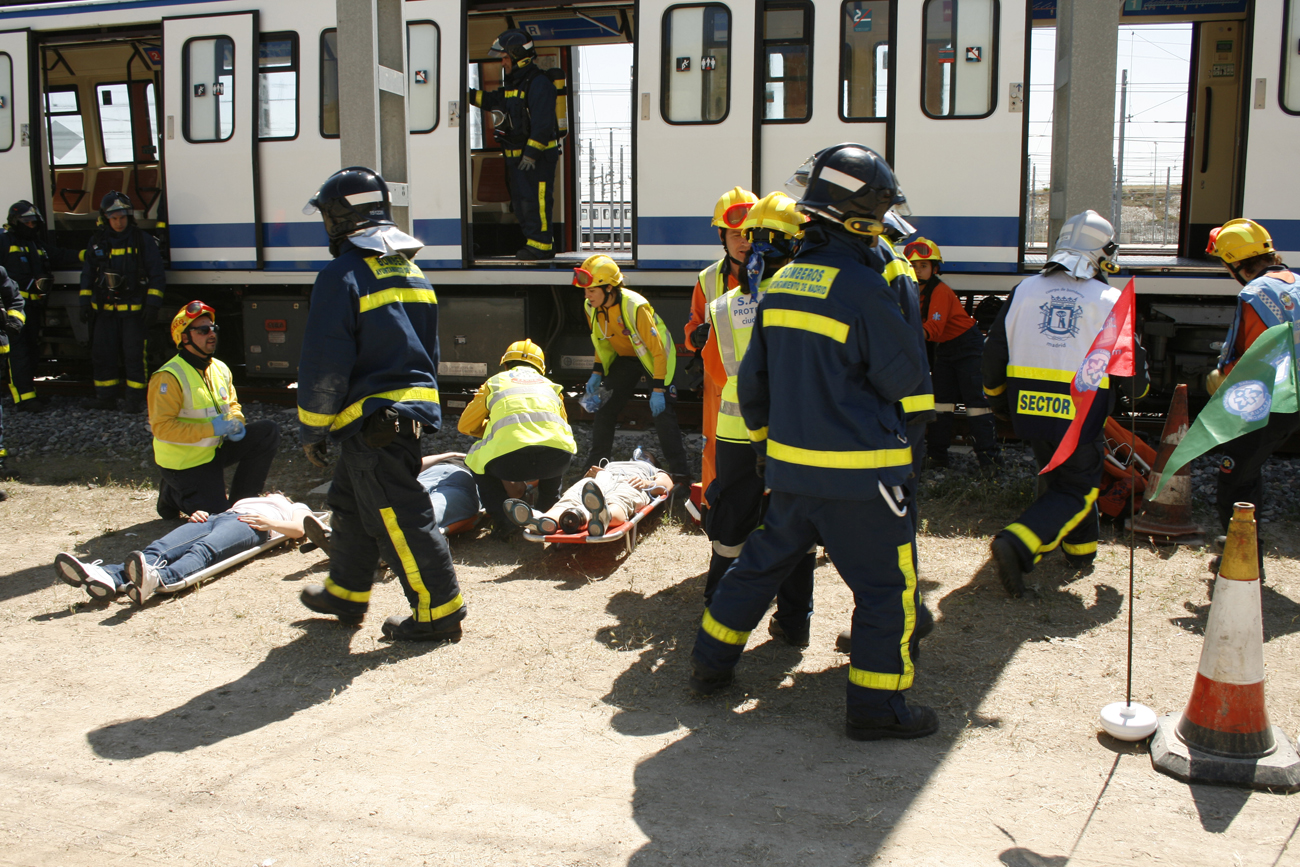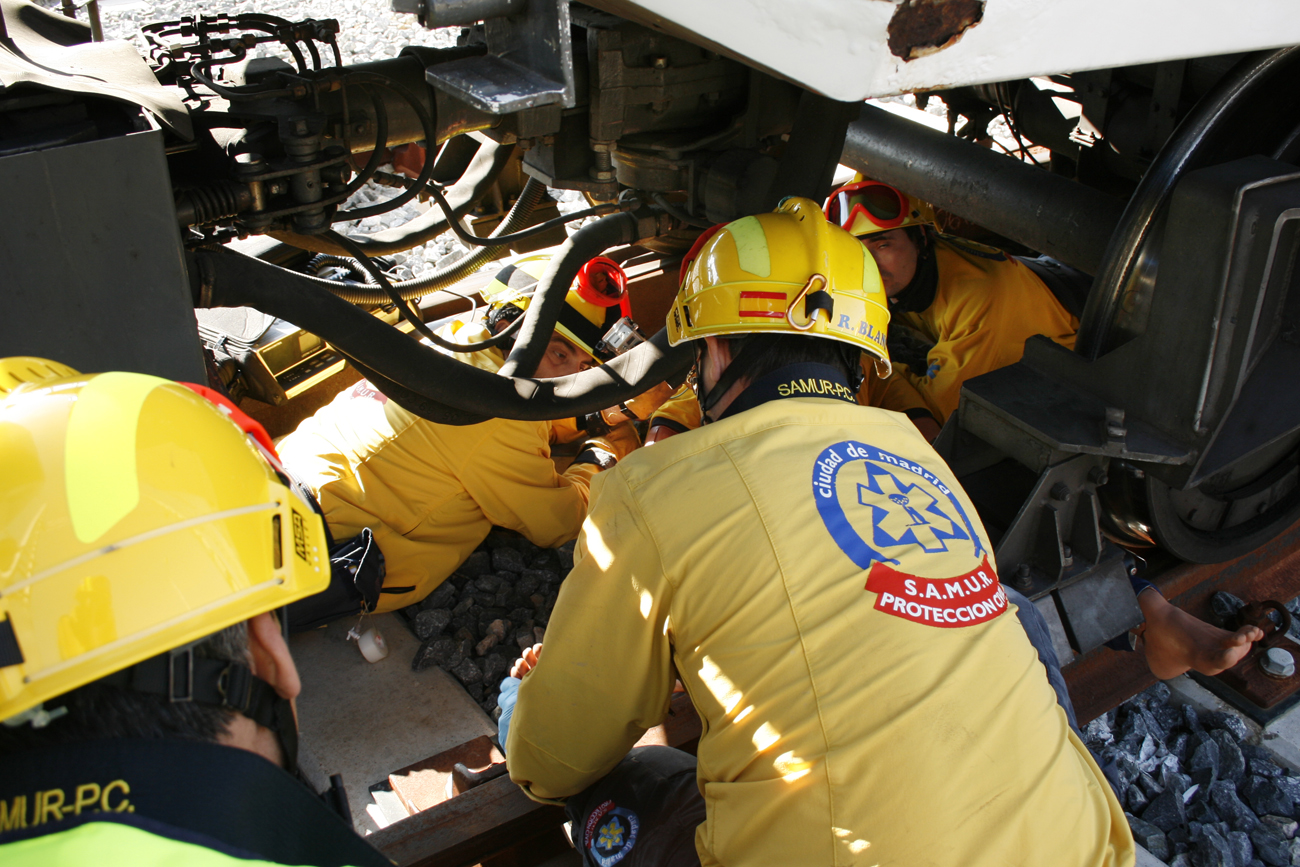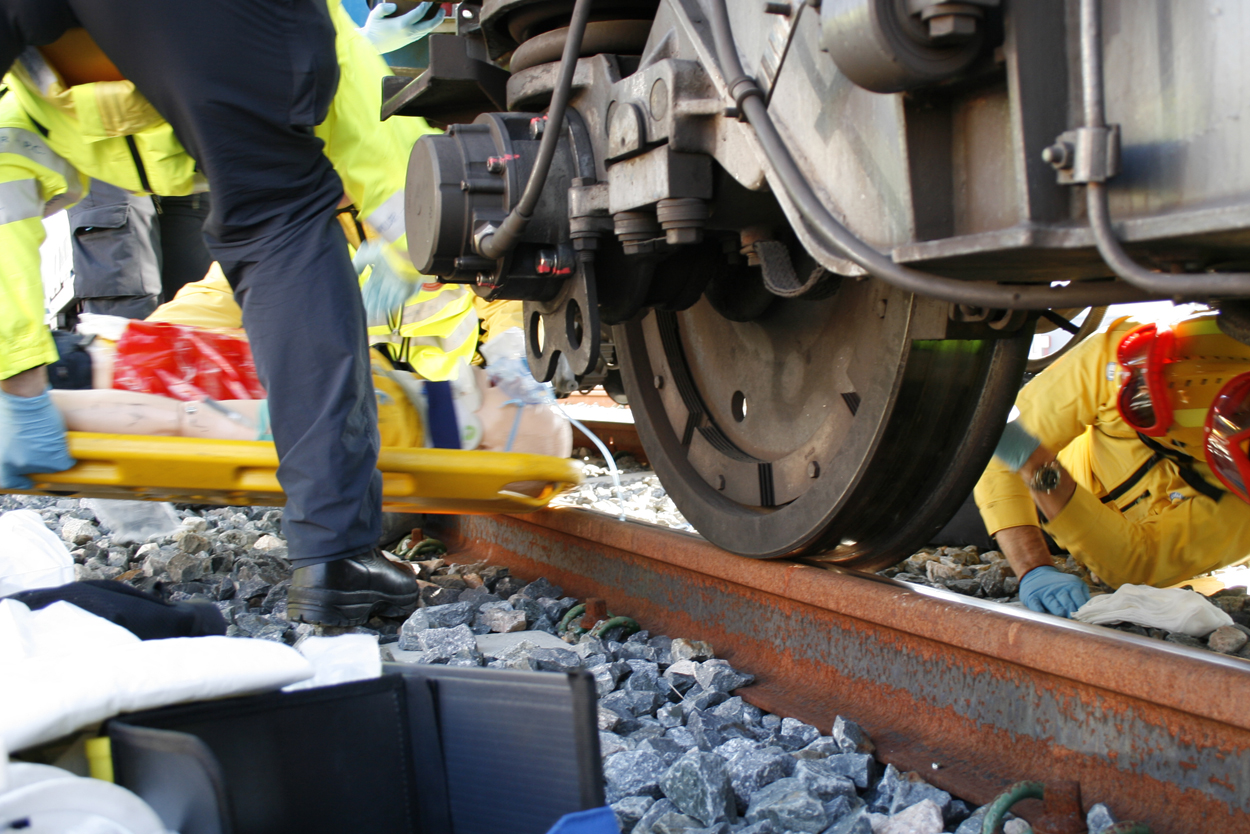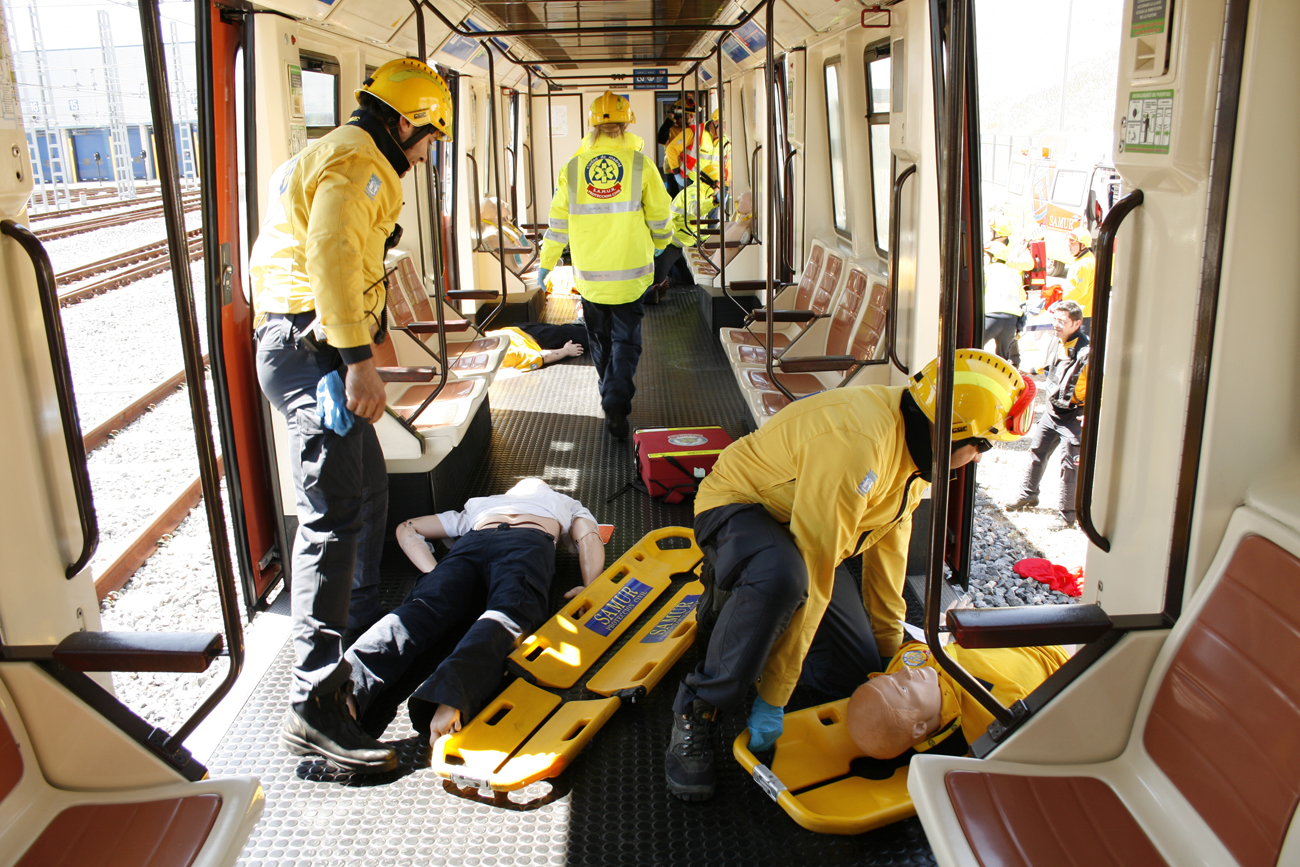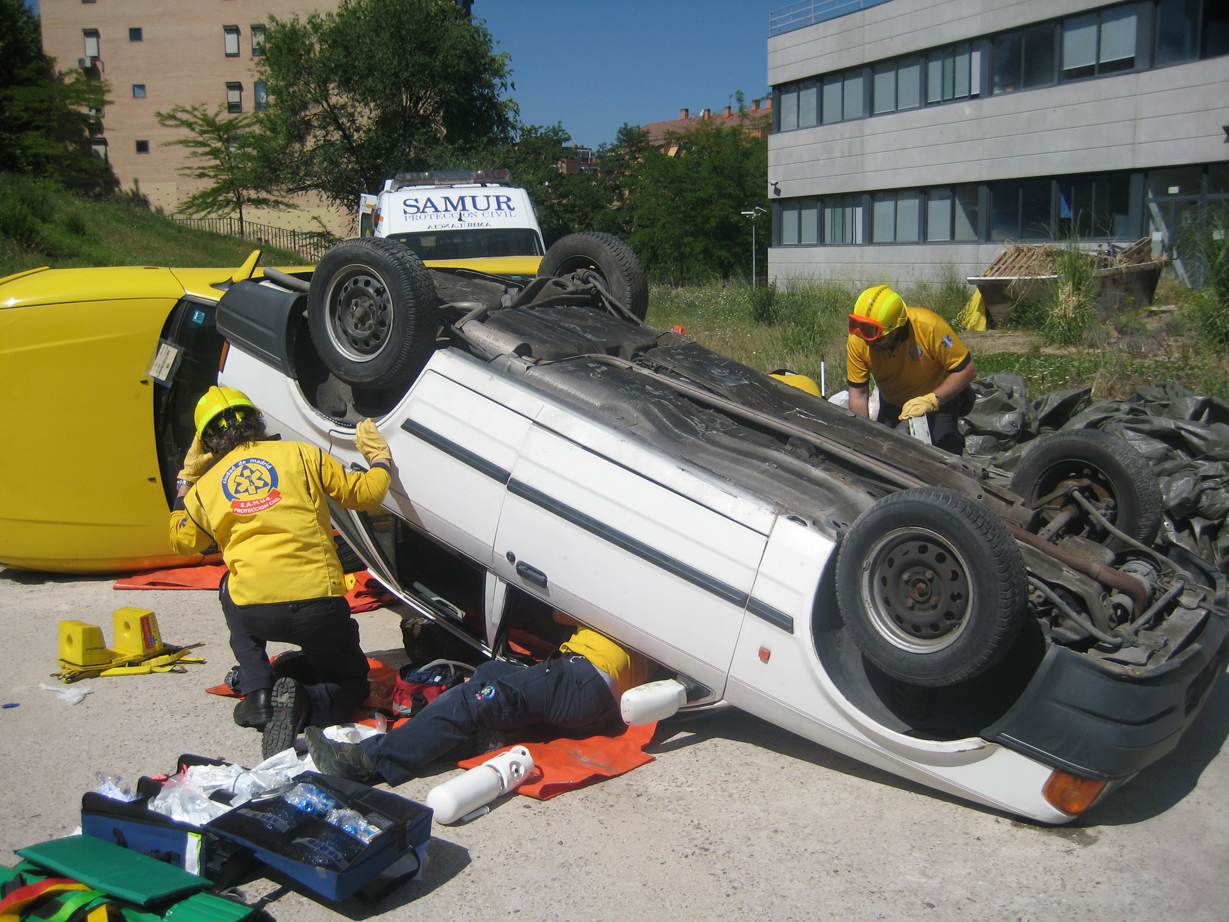Internal Training

In response to the educational needs, continued and different training lines are implemented in different areas:
Training of multidisciplinary teams (doctors, nurses and technicians):
In these training sessions, real operational teams who work together on a daily basis, make a drill simulating a real situation:
- Training in (MCI) Mass Casualty Incidents: as a result of the analysis of our performance in the March,11th terrorist attack, the initial MCI procedure was modified and it is trained on a regular basis, making a comprehensive study of this training sessions to improve them. This educational activity has been highly appreciated by the different professionals and has highly improved the organizational aspects of this type of action.
- Seriously injured patient care, evaluation and/or display, immediately after, for analysis and improvement of the teamwork. Among the aspects studied, special attention to communication within the team has to be paid. Recently, the team training unify some previous courses as Rescue and MCI in difficult situations, developing outdoor scenarios previously designed.
Training on various specific issues for all proffesional:
- Meeting with the Expert: training activities conducted by expert teachers, with several editions to allow every physician, nurse or EMT to assist.
- Overview of fractures and inmobilization for physicians and nurses.
- Evaluating evaluators: both Chief Emergency Nurse on duty and Chief Emergency Physician on duty are trained to "refine" their evaluations. The same event will be " blindly evaluated " by them and an ideas-sharing sessions will be done afterwards.
- Seriously pediatric injured patients, for physicians and nurses. This training session is made with the teaching staff ot the "Gregorio Marañón Pediatric Hospital".
- Emergency vehicles driving: mandatory for all EMT.
- Specific training in the Comprehensive Trauma Care for physicians and nurses and Initial Trauma Care for EMTs, directed to the real needs of SAMUR-Civil Protection professionals in their daily work.
- Advanced Life Support for EMTs: practical training sessions based on the method or changed roles, and the development of assistance skills as an "emergency Gymkhana". Recently, it has been included a virtual ambulance that allows access to the location and characteristics of all materials inside an Advanced Life Support Unit.
- Research Training: the goal is to stimulate interest in this area, providing the tools for data exploitation (bibliography search, SPSS, Oracle, critical reading of medical articles, etc..) to all professional categories.
- ECOFAST: training session derived from the incorporation of new diagnostic technologies, ultrasound, in the prehospital setting. Once a year , a course in ultrasound update for physicians is conducted.
- CPR for physicians, nurses and EMTs. Update on CPR based on American Heart Association guidelines.
- Training on environmental issues, to communicate the environmental quality policy of the service and good environmental practices, following the commitment of EMAS accreditation.
- Training for psychologists: review of pharmacology in emergency psychiatry and psychology, training in "negotiation" and "suicide attempt" situation, differential diagnosis between organic pathology vs psychological pathology, victims in mass terrorist attack and MCI. All psychologists are also trained in Basic Life Support technicques.
- Pediatrics for EMTs: theoretical and practical taining dealing with medical and trauma-related aspects and first assistance to childbirth and newborn.
- Emergency Techniques at Forensic Anatomical Institute. Innovative training for doctors and nurses in different techniques that are practiced on cadavers in the morgue.
The process of internal training aimed at acquiring and updating knowledge and skills in emergency medical care by professionals SAMUR-Civil Protection establish the following methods and sources of detection of educational needs in order to develop the training activities:
- Outcomes of the evaluation of performance by the Chief Emergency Physician and the Chief Emergency Nurse on duty.
- Analysis of the contents of the assistance reports.
- Outcomes of the satisfaction surveys of the previous training sessions.
- Collection of the professionals' perceived needs.
- Incorporation of new technologies.
- Strategic lines defined by SAMUR-Civil Protection.
- Outcomes of the users' satisfaction survey about the service provided by SAMUR-Civil Protection.
Furthermore, in addition to the collective needs of training, SAMUR-Civil Protection has implemented an individual detection system of educational needs, which results in an individualized training plan based on:
- The recording and later discussion of practical clinical cases by teams. Audiovisual material is delivered to the professionals for further evaluation.
- Conducting individualized training through a mentor or tutor in the ambulance with specific areas of training.
Horizontal training programme:
- Competency-based training for managers and team leaders.
- Courses as a trainer of trainers for internal teachers.
- Courses on teaching material (training dolls, etc) management for internal teachers.


